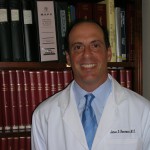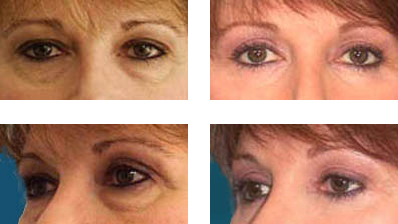
People are at first drawn to the eyes of others. We want, in our initial encounters, to give an impression of youthful vibrance, and there’s nowhere more important than the eyes. With all of this, plastic surgeons strive for results that appear “natural” and “healthy”, words Dr. James Namnoum of Atlanta find not to be mutually exclusive.
By James D. Namnoum, MD
and Chris Knisley
ThePlasticSurgeryChannel.com
 The Age Of The Eyes
The Age Of The Eyes
Dr. Namnoum tells us that most people begin to show aging around their eyes by the age of forty. People begin to look tired, with dark circles that won’t seem to go away. They may experience sagging of the skin below the lower lid and the crow’s feet might be extending their reach across the face.
The first thing people use to combat the appearance of aging is cosmetics. After awhile, however, that just isn’t enough. Then begins the contemplation of a surgical response to aging. And it is the patient’s hope that this response doesn’t actually appear surgical at all.
The Surgery
The smallest bones in the body are around the eye and it should be no surprise that surgeries around the eye are some of the most complicated. Namnoum admits, “The structure of the eyelid is very complex, and this is why it takes a really sophisticated understanding on the part of the surgeon.”
According to Namnoum, the surgeon’s operation must address the lengthening of the skin line between the lash and the tear trough as well as the bulging of the fatty tissue around the eyeball.
“What we’re doing in eyelid surgery is re-draping the skin, contouring the fat, and often tightening the corner of the eye in a way that makes the eye look beautiful and natural, giving the patient a very rested look.” Even fat-grafting can be employed between the lower lid and upper cheek to restore a healthy, smooth fullness that can make patients look much younger.
The most important aspect of all surgeries, especially around the eye, is safety. Patients must demand a precision of expertise and execution from their selected surgeons.
The Choice
To undergo a procedure is a person’s choice, but the choices don’t end there. Well-informed choices are a patient’s most valuable asset when it comes to achieving a desirable result. Research must be done not only on the many types of procedures but on the many types of surgeons as well.
A consultation will give a patient an opportunity to discover if a chosen surgeon has the same ideals, the same vocabulary as they do. Good communication will lead to matching goals and an understanding of what is possible.
Everything ends with results. A harmonious process between patient and surgeon will lead to a harmonious result in which both parties have made their desires manifest.
Namnoum reiterates, “Communication is the essence of this. Understanding what’s being asked and what can be delivered is the essential part of making a successful encounter.”


 The Age Of The Eyes
The Age Of The Eyes














Facebook
Twitter
Instagram
YouTube
RSS